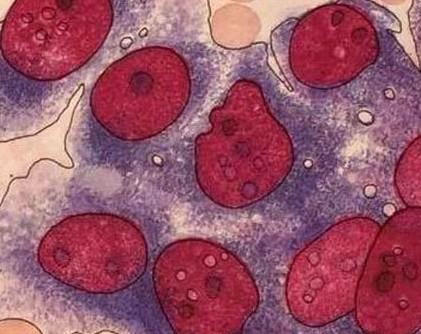Bilirubin is formed from haemoglobin and other haem molecules in the presence of the enzymes haem oxygenase and biliverdin reductase . The broken down heme travels to the liver, where it is secreted into the bile by the liver. High bilirubin levels in certain diseases are responsible for the yellow color of bruises and the brown color of feces. Bilirubin is reduced in the gut to produce urobilinogen, which is excreted. Bilirubin scavenges free radicals and other reactive oxygen species and protects tissues against oxidative damage.

Bilirubin
Bilirubin exists in the insoluble form as unconjugated bilirubin/indirect bilirubin, or bound to glucuronic acid to form conjugated bilirubin/direct bilirubin. The indirect form is transformed into a soluble or direct form, in the liver. Total and direct bilirubin levels are measurable from the blood, but indirect bilirubin is calculated from the total and direct bilirubin. Results are listed as "BU" for unconjugated bilirubin and "BC" for conjugated bilirubin. Total bilirubin measures both BU and BC.
Indirect bilirubin: 0.3 to 1.9 mg/dL
Jaundice is the most common disease caused due to elevated bilirubin. It is seen in the sclera (white) of the eyes at levels above 30-50 μmol/l, and in the skin at higher levels. Jaundice is classified into conjugated jaundice and unconjugated jaundice, depending upon whether the bilirubin is free or conjugated to glucuronic acid. An increase in unconjugated bilirubin implies hepatic jaundice and is treated medically, whereas a rise in conjugated bilirubin indicates posthepatic jaundice, a condition that may require bile duct surgery or therapeutic endoscopy. Physiologic jaundice of the newborn is a result of the immature liver's deficiency of conjugating enzymes.
Increased indirect or total bilirubin count indicates the presence of Hemolytic, sickle cell or pernicious anemia, Transfusion reaction, Crigler-Najjar syndrome, Erythroblastosis fetalis, Physiological jaundice, Gilbert's Disease, Hemolytic Disease of the newborn or healing of a large hematoma. The normal levels for indirect bilirubin is 0.3 to 1.9 mg/dL.
Increased direct bilirubin may be a sign of Cirrhosis, Bile duct obstruction, Hepatitis, Dubin-Johnson syndrome or Intrahepatic cholestasis. The normal levels for direct bilirubin is 0 to 0.3 mg/dL
High bilirubin levels (hyperbilirubinemia) in a newborn baby can cause brain injury, hearing loss, problems with the muscles that move the eye, physical abnormalities, and is fatal. Babies who develop jaundice may be treated with special lights (phototherapy) or a blood transfusion to reduce their bilirubin levels. Adults should restrict from eating and drinking for 4 hours before a total bilirubin test.

![Diseases, Symptoms, tcm, [tcmwindow.com]](/uploadFile/adImg/2015/11/11/f5cbfcc0-4df5-4646-9b9a-f316651a0199.jpg)





